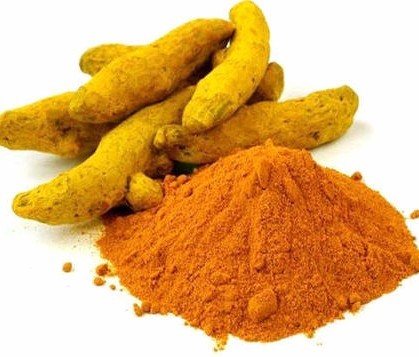
Turmeric is a rhizomatous herbaceous perennial plant of the ginger family, Zingiberaceae. It is native to southwest India, requiring temperatures between 20 and 30 °C and a considerable amount of annual rainfall to thrive.
A cousin of ginger, Turmeric is the main spice in the curry powder used in making Indian Curry Masala.
Other names of turmeric includes
1. Curcuma (French, Italian, and Spanish)
2. Kunyit (Malay)
3. Jiang huang or yu jin (Chinese)
4. Taamerikku (Japanese)
5. Haldi (Hindi)
6. Khamin (Thai).
Turmeric is a leafy, stem-less plant with oblong lily-like leaves. It is harvested for its roots, or rhizomes. These are collected from February to April. Roots are boiled for few minutes and dried. The boiled and dried root is grounded into the bright yellow powder for cullinary usage.
Turmeric is useful in fighting infection and reducing inflammation and contains high amounts of antioxidants.
Turmeric oil is used in perfumes, and its resin is used as a yellow color component in foods. Turmeric is also used in toothpastes, makeups, soaps, skin ointments, dyes and coloring for easter eggs.
हल्दी के फायदे
Turmeric is used for arthritis, intestinal gas, stomachbloating, loss of appetite, jaundice, liver problems, kidney problems and curing internal bleeding.
It is also used for day to day headaches, colds and mild infections.
Preliminary studies found that curcuminoids may
- Reduce the number of heart attacks bypass patients had after surgery
- Control knee pain from osteoarthritis as well as ibuprofen did
- Reduce the skin irritation that often occurs after radiation treatments for breast cancer.
- Source: https://nccih.nih.gov/health/turmeric/ataglance.htm
